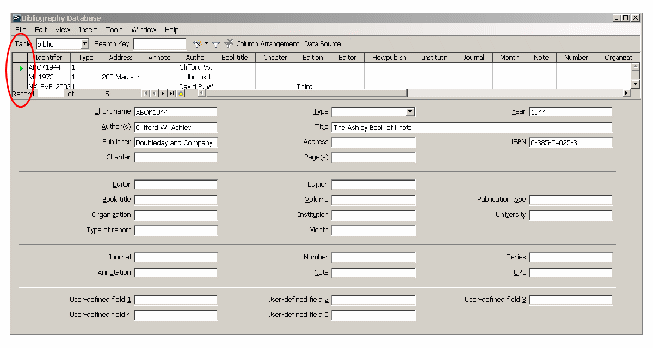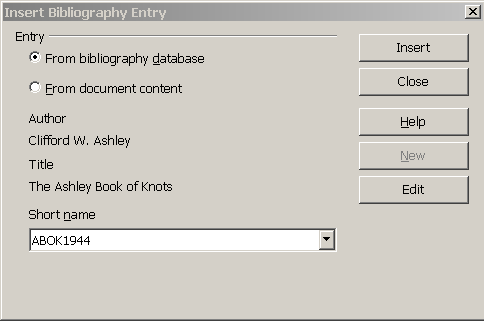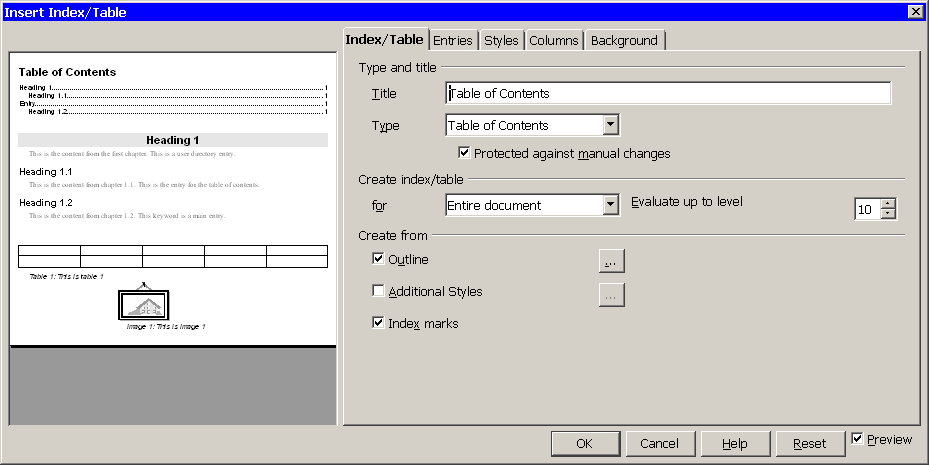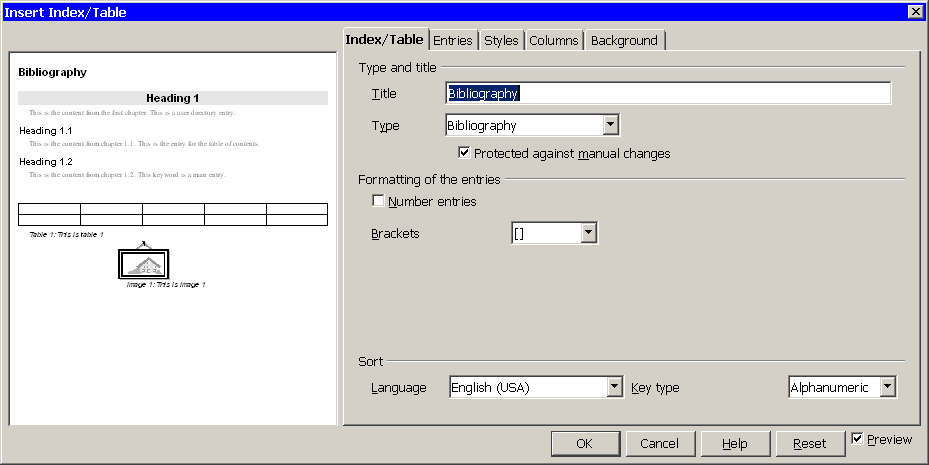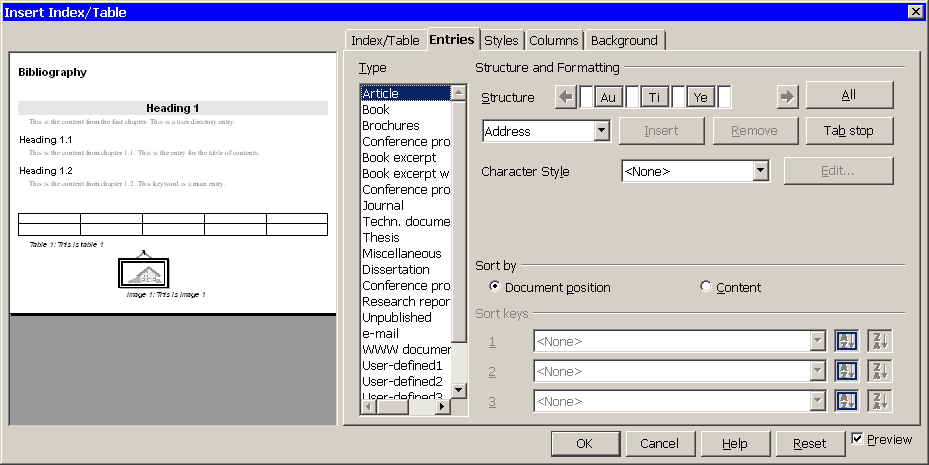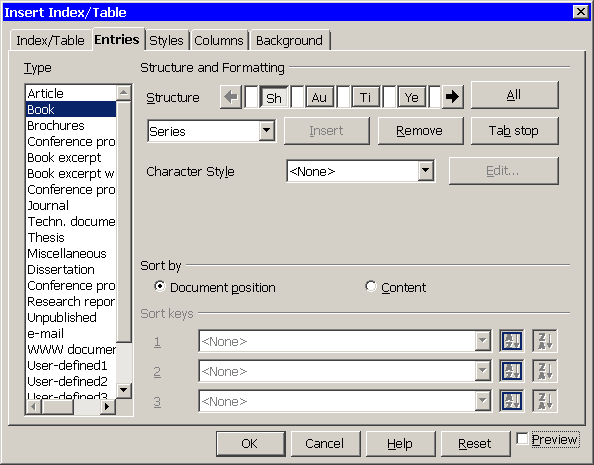 |
 |
|
Image by: Sally Peterson
|
|
|
|
Bibliographies Table of Contents This tutorial has been contributed by Don Peterson Open Office Writer contains a built-in database that can keep track of bibliography entries. Thus, you can enter a reference source's data once, then refer to it in future documents.
Use Tools > Bibliography Database to bring up the database window. You should see something like the following picture:
Click on the yellow star in the column buttons within the red ellipse (you may have to scroll to see the yellow star). This adds a new entry to the database. Type in the relevant fields for the reference in the boxes below the table. Choose a meaningful short name, as you'll use it to identify and enter bibliographic references in later documents. Add other entries as appropriate. For the above book, I entered the short name, author, title, publisher, year, and ISBN. When you're finished, you can close the window.
To insert a bibliographic reference in your document at the cursor, use Insert > Indexes and Tables > Bibliography Entry... . You'll see a window like the following:
In the selection box, select the short name of the reference you want to make an entry for, then click on Insert. You'll see the short name in your document in square brackets, such as [ABOK1944].
Choose Insert > Indexes and Tables > Indexes and Tables... . You'll see the following dialog:
In the Type selection box, select Bibliography:
If you leave the "Protected against manual changes" box checked, you won't be able to edit the entries in the resulting bibliography, nor will you be able to update the bibliography if you've added more bibliography entries to the document. If you press the OK key now, here's an example of what you'll get (there's one entry, since I referenced one bibliographic entry in this document):
This will be inserted as a table. The default presentation of the entries will probably not be to your liking. Use the Entries tab in the above dialog to change how the entry is displayed. Right click anywhere in the bibliography table and select Edit Index/Table, then click on the Entries tab. You'll see:
To the right of Structure, you'll see three buttons labelled Au (for author), Ti (for title), and Ye (for year). These are the fields that are displayed in the bibliography. The white spaces between the entries are blank, indicating that there will be no characters separating the fields. Let's change our bibliography format to the following:
This dialog is complicated and confusing, so you may have to open it a number of times, make a change, then see if you're getting what you want. I'll go through the steps for changing the ABOK1944 entry (the only one in the above table) to the presentation format we want.
You can see the Sh button has been added, which indicates the Short name field.
You may want to modify the Bibliography Heading and Bibliography 1 styles to customize the appearance of your bibliography (I did so here to get the indentation I wanted). You'll also want to investigate the Entries tab some more. For the book bibliography entry, see if you can figure out how to make the book title be shown in the Emphasis style. As you edit your document and add more bibliographic entries, you'll want to right click on the Bibliography and click on Update Index/Table. If you do, be aware that any manual changes you've made to the table's contents will be lost. NOTE Tutorials are improved by input from users. We solicit your constructive criticism. Click here to E-mail your suggestions and comments Bibliographies 02/17/08 Last modified: 2008.04.25 20:33 UTC
|
